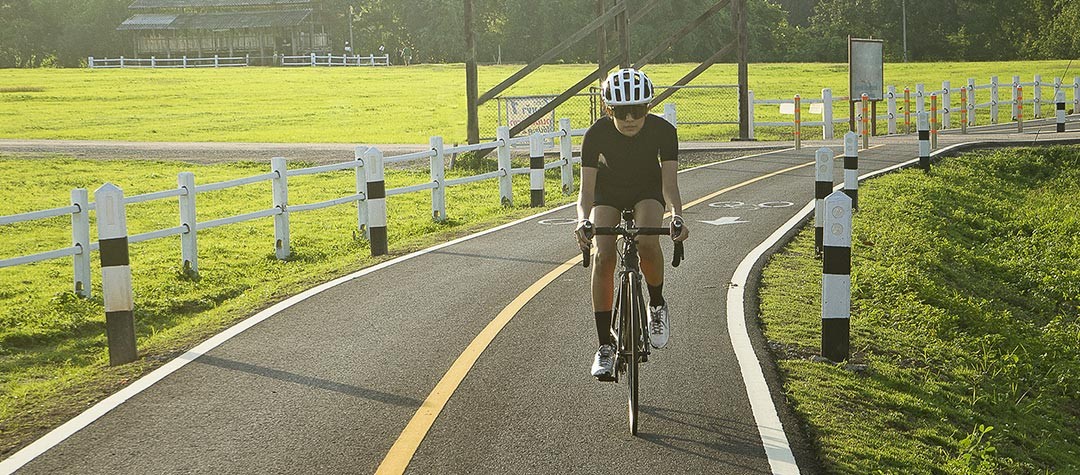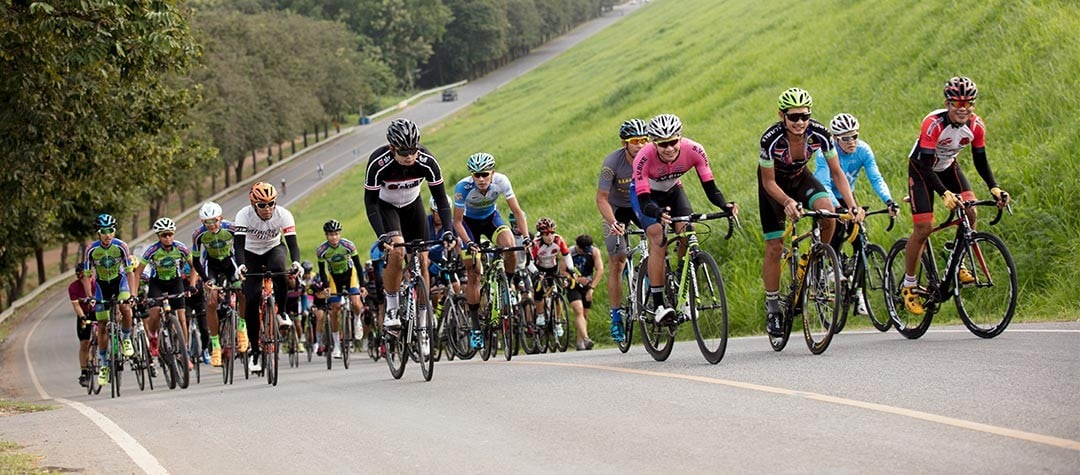Knowing which road tyre is best for you is important if you want to get the right degree of performance versus puncture protection.
Let’s face it, having fast tyres that puncture at first contact with a bit of road debris, ends up having the opposite effect. All that stopping to repair a flat makes you slow...and very frustrated. By finding a tyre that best suits your purpose - whether it is racing, training or commuting or something else - is the ideal solution here.
Clearly a tyre that is as fast as possible, but doesn’t leave you prone to punctures, is what most of you will be seeking. You need to consider where and how you do the bulk of your riding, the weather conditions you’ll encounter, and your budget, rather than just which is the lightest and quickest tyre.
Rolling resistance
Rolling resistance is a term that is frequently used when considering tyres. It concerns the friction created when tyres roll, essentially the energy that is lost when the tyre is rolling. Riders will want to minimise rolling resistance in order to ride faster and minimise the energy required to propel the bike.
A tyre with good rolling resistance will be lightweight and fast, but the downside is that they will be generally more prone to puncture. Therein lies the quandary facing cyclists - do they minimise the rolling resistance at the expense of comfort and puncture protection, or do they go with a heavier (and often thicker) tyre which offers less chance of a flat and a more comfortable ride?
Tyre widths
Tyres to suit a standard road wheel are usually sized 23mm, 25mm or 28mm. Traditional thinking was that 23mm widths were put on race bikes, 25mm were considered as suitable for training, and 28mm widths were most suitable for rougher terrain roads.
Wider tyres have been adopted by many pro teams and 25mm tyres are becoming the norm on road bikes.
This thinking has been turned on its head by recent research which has said that narrower tyres are not necessarily faster. The research has suggested that you can enjoy the same, or even a lower rolling resistance, with a larger tyre at a lower pressure. As a result, wider tyres have been adopted by many pro teams and 25mm tyres are becoming the norm on road bikes.
Comfort
The width of a tyre will undoubtedly have a bearing on your comfort on a ride. Wider tyres will generally provide better comfort due to the increased air volume which acts almost as natural suspension. But this increase in ride comfort will generally come at the cost of speed.
If riding comfort is of more importance to you than speed then consider a wider tyre that you can run at lower pressure, which will also have the added bonus of being slighter more puncture resistant, even if it does prevent you being able to claim all those KOMs on Strava.
Grip & weather conditions
One of the main roles of your tyres is to provide good grip. Grip is affected by a number of factors including the level of tread, type of compound of a tyre, plus the actual weather conditions and the roads themselves.
Dry conditions in summer may mean you can use a lighter more racy tyre rather than a heavy duty grippier tyre that you might use in the winter, when the roads are covered in more puncture-causing debris. Chunkier tyres will provide greater puncture prevention, but make sure that they still allow enough clearance for you to add those winter mudguards which you will most definitely want to use.
Terrain
The type of surface you ride on will have an impact on the type of tyre you choose. If the bulk of your riding is likely to be done on super smooth roads (highly unlikely we know) then thin light racing tyres may suffice. Alternatively a good all-round tyre, equally at home on rougher surfaces will be ideal.
Road bike tyres are expected to last anything from 1,500km to around 5,000km.
If you commute in town, where broken glass and other debris is likely to be prevalent, then you’ll likely need a more heavy duty commuter-type or touring tyre, and one that will be hard-wearing so you’re not having to replace them at too frequent intervals. Road bike tyres are expected to last anything from 1,500km to around 5,000km, so if you are getting less than that then switch tyre manufacturer!
Price
Prices of tyres vary massively. It is always worth shopping around and looking out for frequent deals or buying discounted bundle packs which offer a good price for buying two tyres together. Cheaper tyres will generally be heavier and may be lacking in grip or puncture prevention. They will often be supplied with a steel bead around the rim, as opposed to ‘folding tyres’ which are more portable and far easier to get on and off the wheel.
Although price may be important to you, it is worth spending what you can reasonably afford. If you are limited to one set of tyres (as opposed to summer and winter-specific tyres) then make sure you find a good all-rounder tyre that works well in a range of conditions. Buying good tyres may seem like a big outlay but will save you in the long run, both in terms of inner tubes and frustration.
Puncture protection
Many of us will judge the tyres we buy, not on how fast they are, but on how frequently they puncture. Some of the top end tyres used by the pros may be fast but they are going to be more prone to puncture than other more hardy but slower tyres.
If racing isn’t your priority and you have more of a desire to avoid sitting at the roadside in the pouring rain trying to change a flat, then go for a tyre that provides good puncture prevention. A thinner lighter tyre with reduced rolling resistance may seem a great idea at the time, but it won’t seem that great when you have your umpteenth puncture that week.
A final word
No tyre is totally puncture resistant and punctures are an inevitable part of riding. Your choice of tyre is important, and unless you are a serious racer, then finding a good compromise between performance and puncture prevention has to be your priority.
If you think you’ve chosen wisely but you continue to get flats on a regular basis, then it’s always worth trying a different brand, after you’ve made sure that your tyre is not overly worn. Some tyres just seem to work better than others for different bikes and riders so find one that works for you and stick to it.
Tyre manufacturers - including big names such as Schwalbe, Michelin, Continental and Vittoria - frequently make modification to their tyres, improving them nearly season on season, so take notice of frequent upgraded models of tyres and occasional name changes, as one tyre is replaced by a newer and better one.















